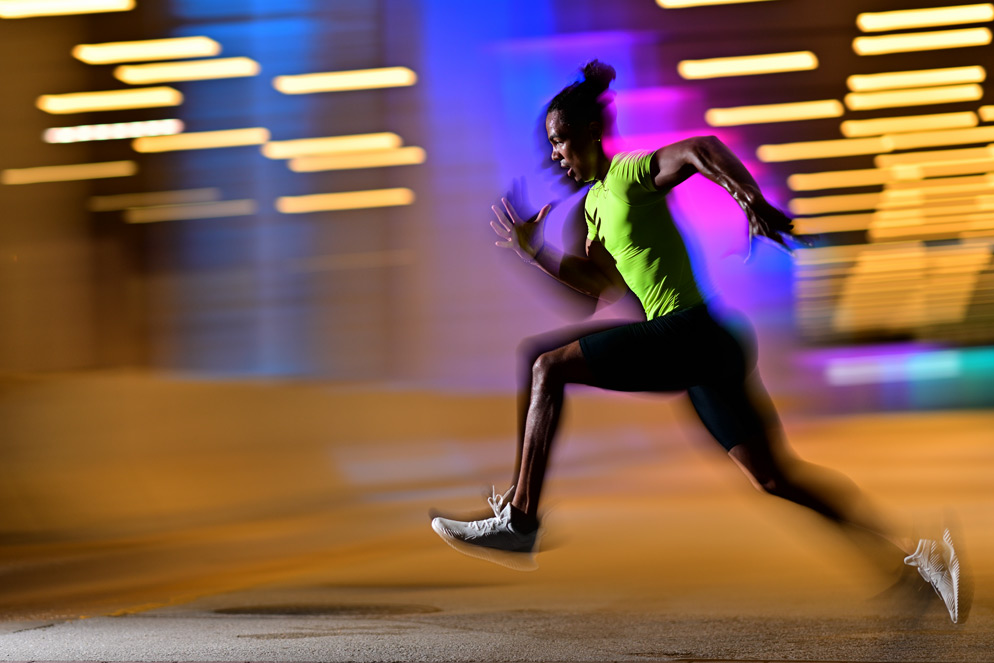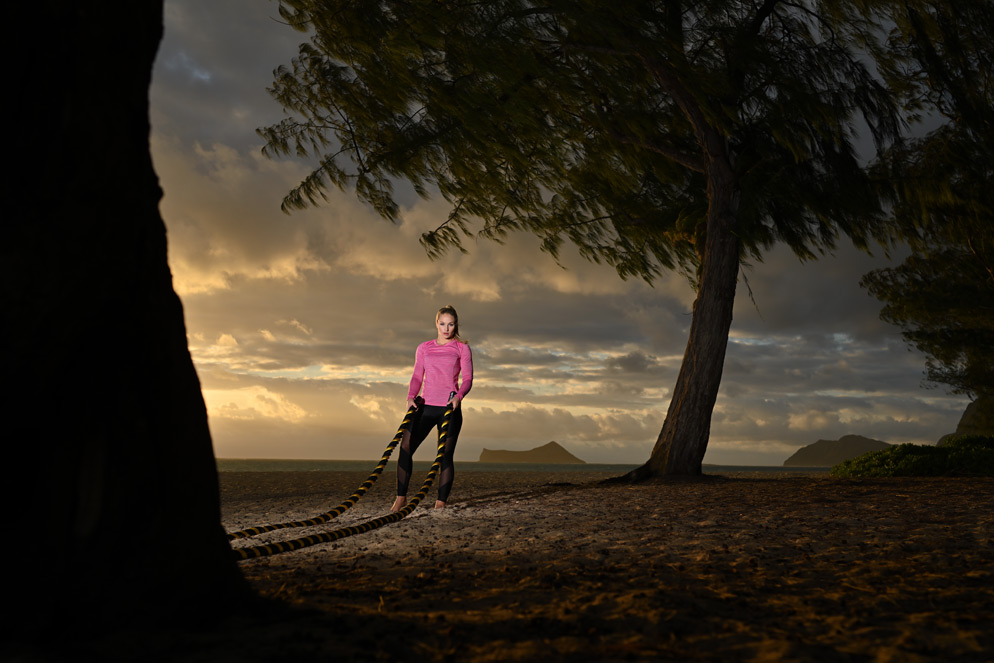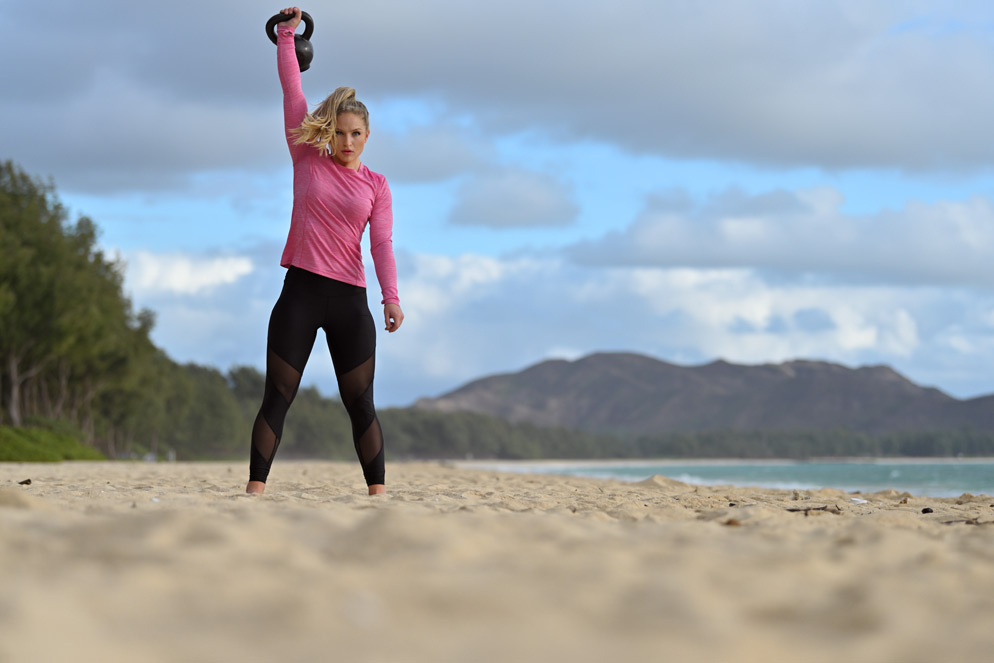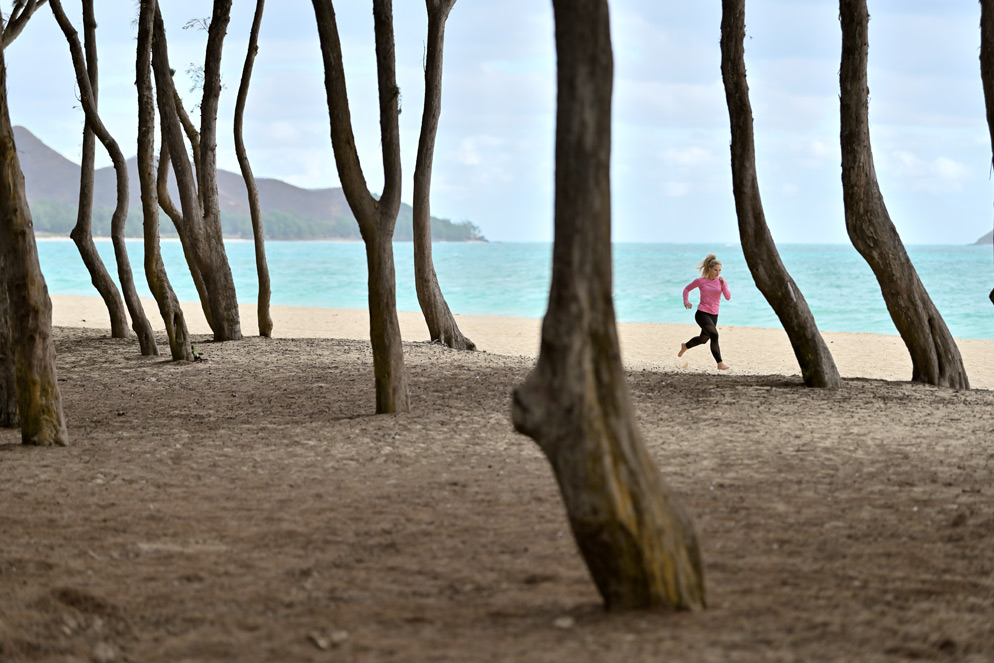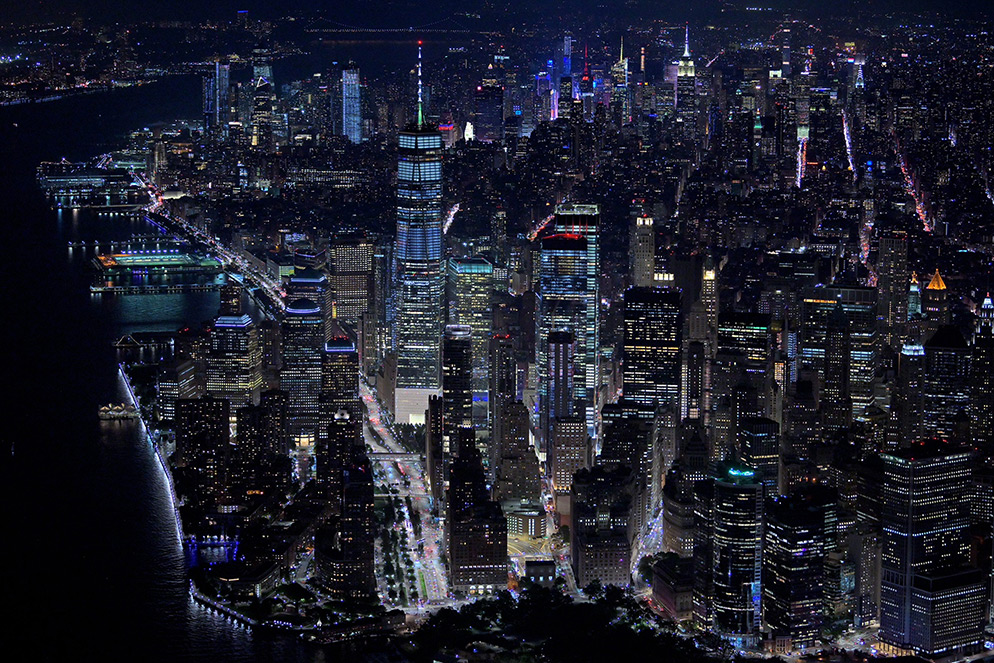Z 7: The Higher Bar
Andy chose Hawaii for its good weather and great light to shoot some end-result images with the Z 7. Then Hurricane Hector appeared on the horizon, and this sunrise photo captured the only sunlight he got for the week's shoot. Air Force personnel were his models, and their fitness training activities provided the action. "The sky gave us a look at the camera's dynamic-range capture capability," he says. Two SB-5000 Speedlights helped light up this scene. Z 7, NIKKOR Z 35mm f/1.8 S, 1/1250 second, f/4, ISO 100, manual exposure, Matrix metering.
In five minutes, I was in love with the fact that what I saw in the viewfinder was exactly what I got in the picture.
We were at the halfway point of our first question—"So, with the Z 7, what’s your feeling about...?"—when Andrew Hancock cut in and said, "As impressed as I was with the camera and the new lenses, I'm more impressed with the potential of this system. The bar has been set high, but the potential of growth within the system is staggering."
Which is why we enjoy talking with Andy: he's way ahead of where we want to go.
Andy, a Nikon Ambassador, is a widely-published photographer who specializes in portraits and sports-related images. Ideas drive his image-making, and what he appreciates most is gear that will keep pace with his ideas—or even suggest them in the first place.
From the start, he was right at home with the Z 7.
A workout on the beach, taken 30 minutes after the sunrise image. Andy shot wide open to soften the background. Z 7, AF-S NIKKOR 70-200mm f/2.8G ED VR II, 1/4000 second, f/2.8, ISO 250, manual exposure, Matrix metering.
The Five-Minute Adjustment
First, it felt like a Nikon. "It should...it is," he says. "It's smaller, it's a different body, but whenever I have the Z 7 up to my eye, I can look into the viewfinder, start to go through the entire menu hierarchy and know where everything is going to be. It's instinctively Nikon."
Getting used to the electronic viewfinder was Andy's prime concern. "The way I thought about it was, I look at enough screens as it is, I don't want to look at another one. For the first five minutes there was a bit of an adjustment, but the EVF was so bright, so clear, and it's got the right ergonomics, it felt like I was looking into a DSLR. I was so focused on what was in front of me, it didn't matter—I had no idea if I was looking at an EVF or an optical."
"The idea here was, Okay, let's see if I can trick the autofocus as I pan with her as she moves among the trees. I couldn't. And I love having 90 percent AF coverage so I can put the point of focus where I want it. Here I was into my rule of thirds preference and could expand the zone of AF." Z 7, AF-S NIKKOR 70-200mm f/2.8G ED VR II, 1/2000 second, f/2.8, ISO 400, manual exposure, Matrix metering.
And because the image he sees in the viewfinder is the image he captures, there's less reviewing. "I know what I’m shooting—I know what my white balance looks like, I see everything immediately. I find myself with the camera to my eye more, looking for the next picture, as opposed to lowering the camera and kind of surveying the surroundings. That quickly became part of me—looking for the next picture through the viewfinder."
So did looking for the next thing to do with that picture. "One of the things I love doing in the studio is sequence multiple exposures of, say, a runner leaving the starting blocks, and then some double exposures. That feature in the Z 7 kind of caught me by surprise. I took the first picture, and when I went to take the second one the first picture showed up in the EVF at 50 percent. I could see through it to what I was currently seeing, so I could compose the second picture right where I wanted it to work with the first picture. I thought, Oh, this is going to be too much fun."
Andy does studio work along with his location shooting, so here he brought out some big lights to see how the Z 7 would perform in that setting. "There was no learning curve for me," he says. "It was just set the camera up the way I normally do and go to work. Great dynamic range, great capture of highlights and shadow detail, and the color rendition was fantastic. And it's a Nikon RAW file—meaning it's everything I trust to make my living." Z 7, NIKKOR Z 35mm f/1.8 S, 1/200 second, f/8, ISO 400, manual exposure, Matrix metering.
The Eye and the Beholder
Andy wasn't the first photographer we spoke to for whom image quality was a major Z 7 factor. "I’m no optical engineer, but I know there's a lot that goes into the technology, and whatever it is they've done with this camera, it works phenomenally well. When I look at a file at the back end there's an easily noticeable difference. The picture is incredibly sharp, edge to edge. What I can do with the Z 7 and NIKKOR S glass is astonishing."
Right now Andy sees the Z 7 as a complement to his D5 and D850, but once again he was quick to jump ahead of the curve. "We're only scratching the surface of what this camera is capable of...we haven't glimpsed the future yet."
Until then, the present is more than enough. "What Nikon has here is significant—it's going to play a major part in how I shoot, and it's going to allow me to do more and do better. I tell people this is a camera for anyone who's serious about creativity and storytelling.
"I want to keep pushing the bar higher, and this camera gives me the ability to do that."
Here Andy used rear curtain sync, which fired his SB-5000 just before the camera's rear curtain started to close. Pan the camera and the result is a subject flash-frozen and a background blurred by the pan and a relatively slow shutter speed. "In downtown Dallas we saw these great lights, so I had my assistant hold the flash as my runner ran back and forth." Z 7, AF-S NIKKOR 105mm f/1.4E ED, 1/15 second, f/2, ISO 100, manual exposure, Matrix metering.
Andy thought it would be cool to hire a helicopter and check out the Z 7 in the night sky over Manhattan. Two other Nikon Ambassadors—Lucas Gilman and Keith Ladzinski—agreed. "Crazy performance from the in-body VR to shoot from an open-door chopper at a relatively slow shutter speed," Andy says. "We each shot 1,600 to 1,800 frames." Z 7, AF-S NIKKOR 70-200mm f/2.8G ED VR II, 1/40 second, f/2.8, 1600 ISO, manual exposure, Matrix metering.

